Any guidebook will tell you that when visiting Barcelona, Spain, the whimsical works of Modernist architect Antoni Gaudí must be the highlight of your itinerary. Those guidebooks also warn you that, when traveling with young children, exceeding one major attraction per day is a recipe for tantrum-laden disaster. With this information in mind, I carefully pared down the itinerary for my family’s upcoming trip: plotting our moves to the hour, mapping out the closest KFCs for my picky eaters, and scheduling in ample time for the all-important and culturally embraced afternoon Spanish siesta. Park Guell and Sagrada Familia, Gaudí’s most iconic works, made the cut, but anything else would have to wait until the next trip – without the kids.
A week before our travels, I happened upon a colleague’s LinkedIn post touting the recent technological transformation of Casa Batlló, an apartment house originally re-designed by Gaudí in 1906. Visiting the house’s website, I found promises of a spectacle not to missed, an hour-long experience of boundless wonders. Realizing that this addition would swell our Friday schedule to three attractions, I took a deep breath, pushed my parental paranoia aside, and purchased our tickets.
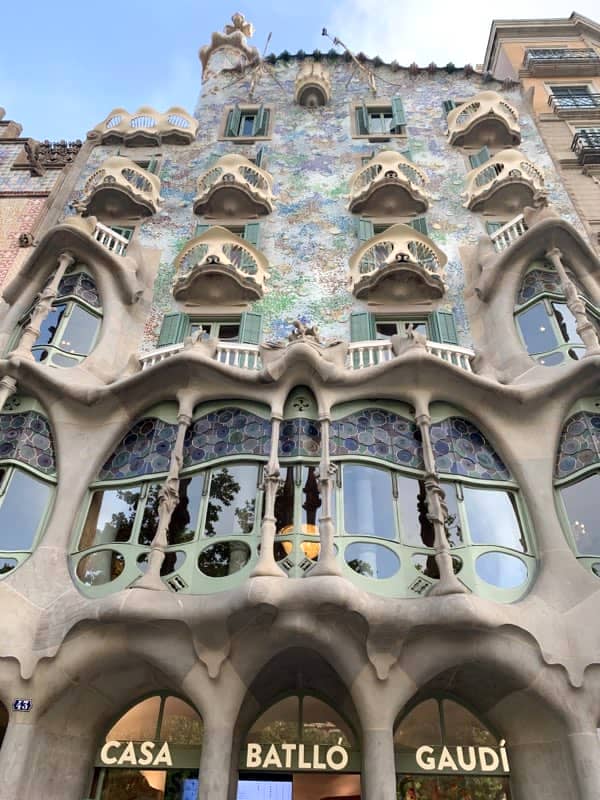
Casa Batlló serves as the gateway to Barcelona’s Eixample District, known for its distinctive octagonal grid street pattern, breathtaking buildings and high-end retail. It rests on an avenue nicknamed The Block of Discord, a row of four visionary homes painstakingly reimagined by prominent architects locked in a desperate battle to “out-modern” each other for fame and glory. Sumptuous, daring and unabashedly unconventional, Casa Batlló’s façade served as an alluring preview for the wonders within. Inspired by the Mediterranean Sea and the legend of the dragon-slaying St. George, the exterior, painstakingly refurbished tile by tile in 2019, features a technicolor, dragon-scaled roof, mask-shaped cast iron balcony railings, skeletal stone columns and hundreds of seemingly candy-coated ceramic discs that gleam in the morning and late afternoon sun. The entire structure evokes the exuberance and joy that Gaudí felt for his craft and challenges the viewer to imagine their own interpretation of the building’s story. We hadn’t even left the sidewalk, and we were already mesmerized.
After presenting our tickets, we were welcomed into the “Gaudí Dome,” home to a pre-show experience entitled “Inspiration of Gaudí: The Origin of Genius.” Passing through a doorway onto a moving walkway, we slowly glided past a cast figure of a boy Gaudí drawing at a desk. Suddenly, the music strengthened, and lava seemed to billow from the floor. As a sickly child, nature was often the artist’s only companion, and the one thousand Panasonic screens above and around us illuminated with the colors and images of air, water, fire and earth that would stimulate Gaudí’s lifelong portfolio of work, including the rooms we were about to see.
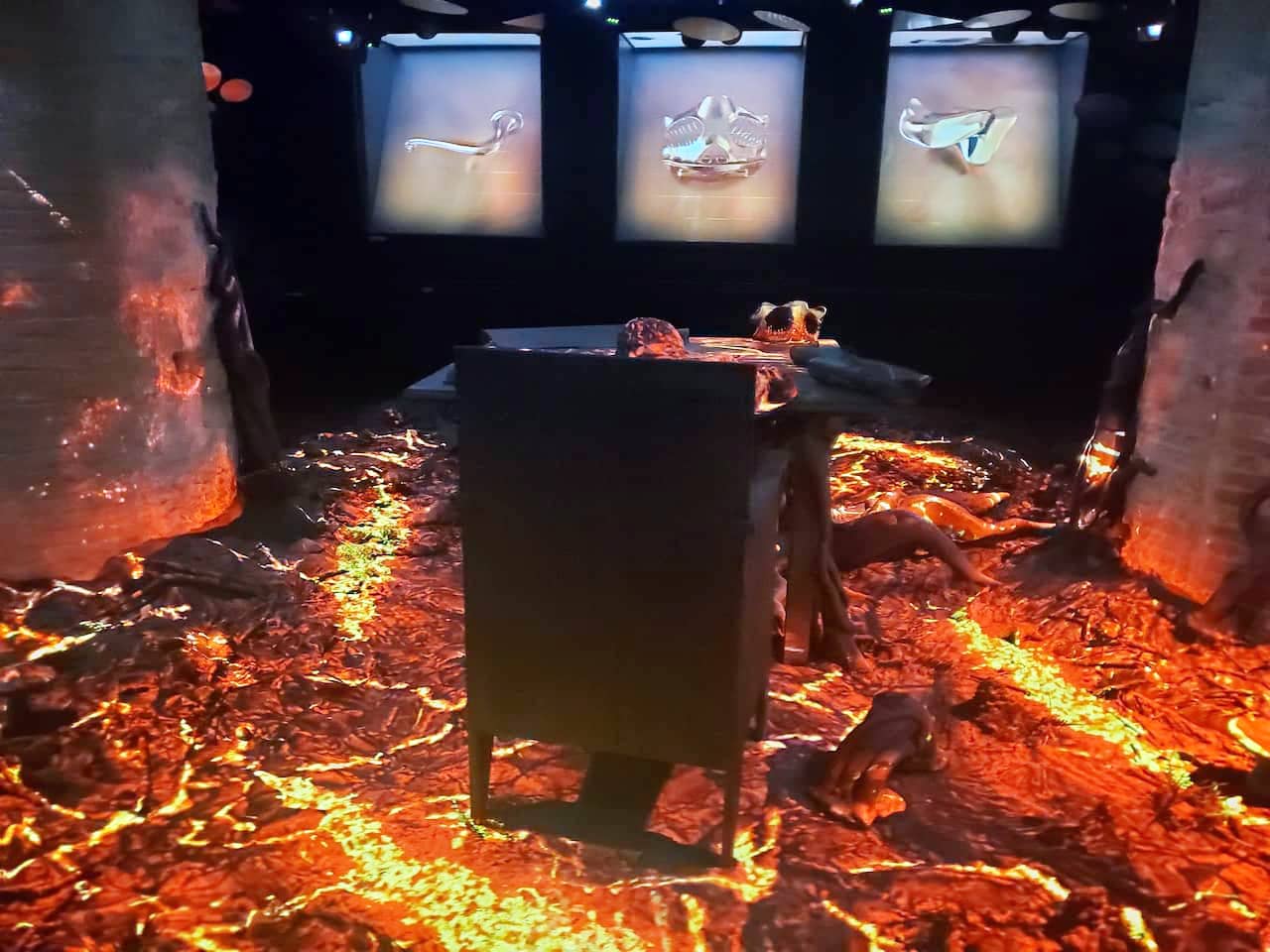
Upon exiting the Gaudí Dome, a Casa Batlló staff member presented us with a video tablet they called the “SmartGuide.” Not only would the SmartGuide provide an augmented reality overlay to the various rooms, it would also serve as the audio tour, offering descriptions in 15 languages and accompanied by the music of British composer Dani Howard. Casa Batlló is the first international cultural organization committed to hiring for neurodiverse conditions such as autism, ADHD and dyspraxia, so throughout our self-guided tour, the majority of the employees who so warmly greeted us fell on the neurodiversity spectrum.
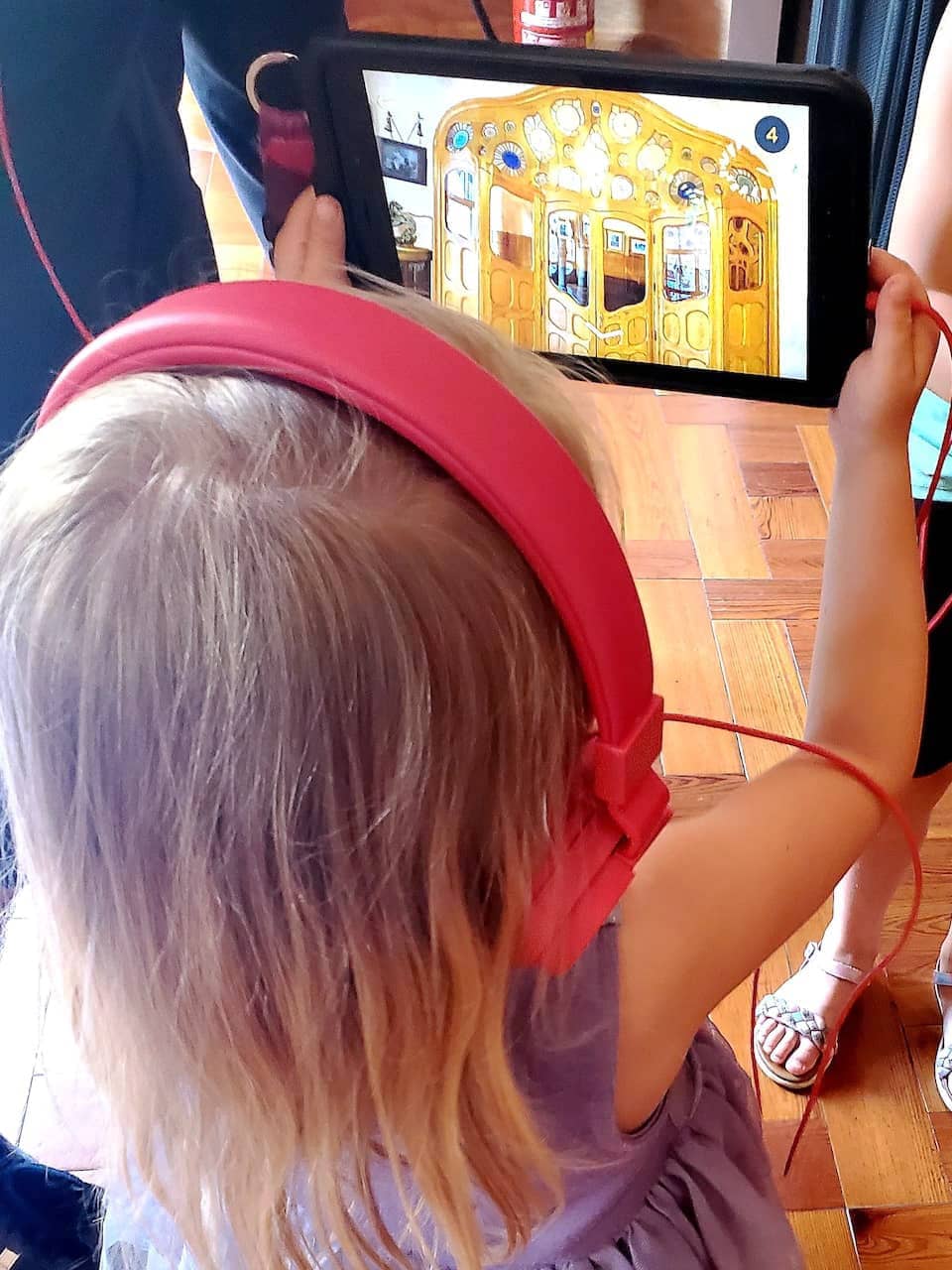
So often, technology can serve to mask or even detract from culture and history, but as we began the tour through the house’s grand rooms, the SmartGuide only seemed to unlock more of Gaudí's imagination, transforming architectural features into those elements of nature we had witnessed in the pre-show. In the Entrance Hall, skylights transformed into playful turtles swimming away, and a curved banister evoking a whale bone undulated as it beckoned us upstairs.
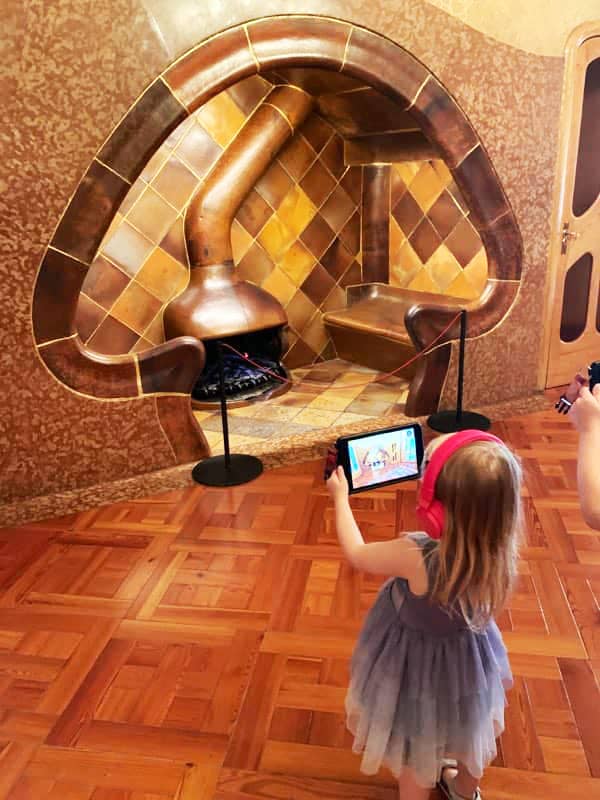
At the top of the staircase, we reached the Noble Floor, where the building’s owner, Josep Batlló, resided until his death. With the use of the SmartGuide, mushrooms bounced out of fireplaces. Light beamed through large stained glass picture windows. Stone ceilings swirled as if they were quicksand. Even without the technology, we marveled at the huge oak doors, the glittering chandeliers and the total absence of right angles. But in addition to introducing motion and magic, the SmartGuides offered insight into how the bourgeoisie who occupied the apartments lived - overlaying period textiles, elaborate furnishings and even an ornate altarpiece.
Leaving the Noble Floor, we encountered the building’s most spectacular feature – the five-story Patio of Lights. At this point, the AR component switched off, purposely leaving us to marvel at the blue-hued tile, as well as the illusory windows that grew smaller as we ascended, making it appear that the building was stretching with every upward step. The audio guide explained the patio’s purpose – to distribute air and light throughout the house – but no explanation was necessary for what inspired this atrium: the waves of the Mediterranean Sea could be seen in every diamond-shaped sliver of ceramic. We only wish we could have visited later in the evening, when projections transform the Patio of Lights into a glowing azure waterfall.
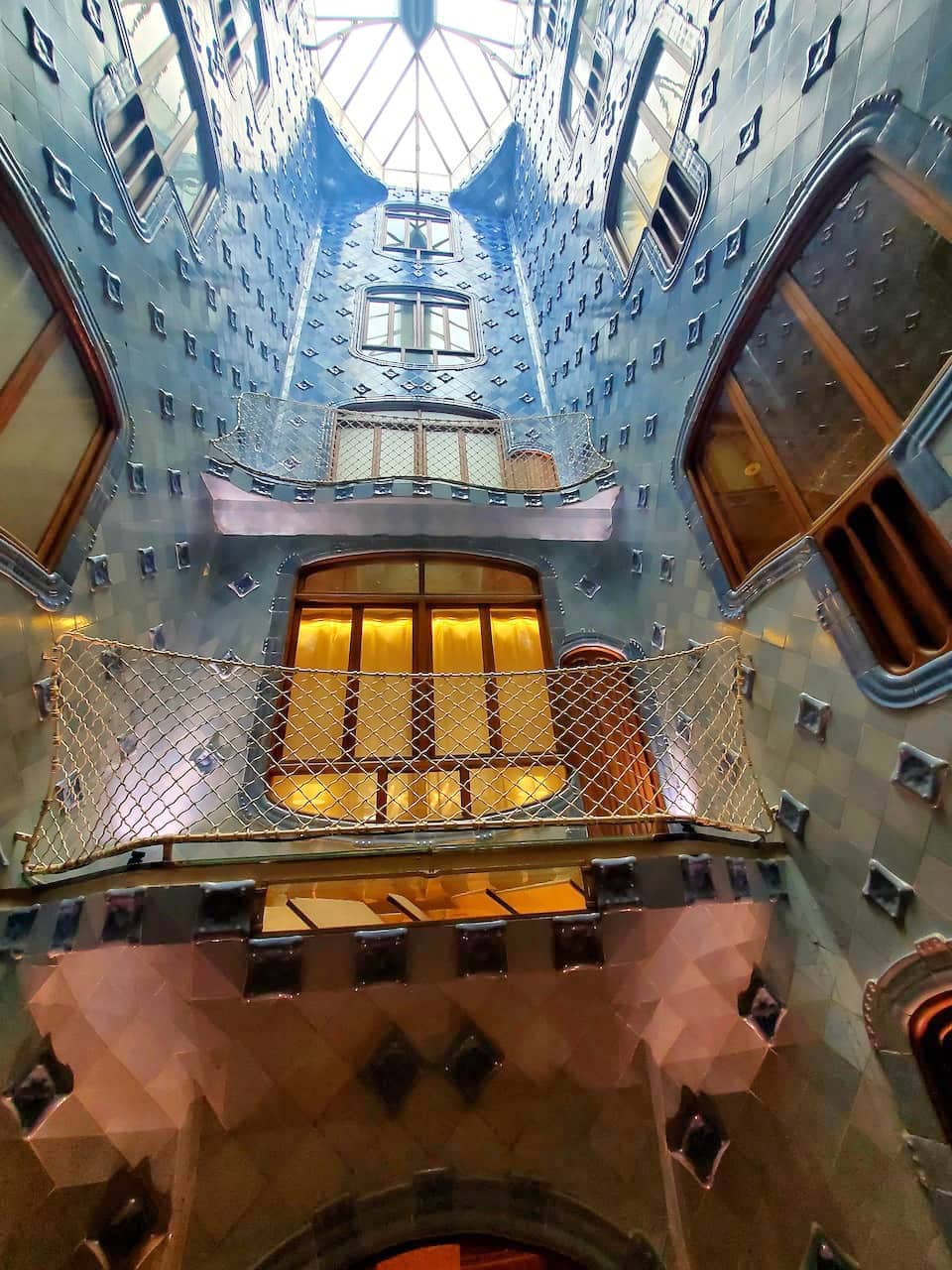
As we completed our ascent, we reached the house’s terrace, where we were encouraged to set our technological devices aside, make the most of the open-air bar, and enjoy the house’s analog splendor – from its colorful mosaics to its undulating chimneys. We were also treated to a commanding view, as the wavy facades of the Eixample stretched out before us. Leaving this elegant rooftop retreat, our descent back through the house began, but not without a walk through the house’s curvilinear loft, where we met a few of Casa Batlló’s original housekeepers via Pepper’s Ghost projections.
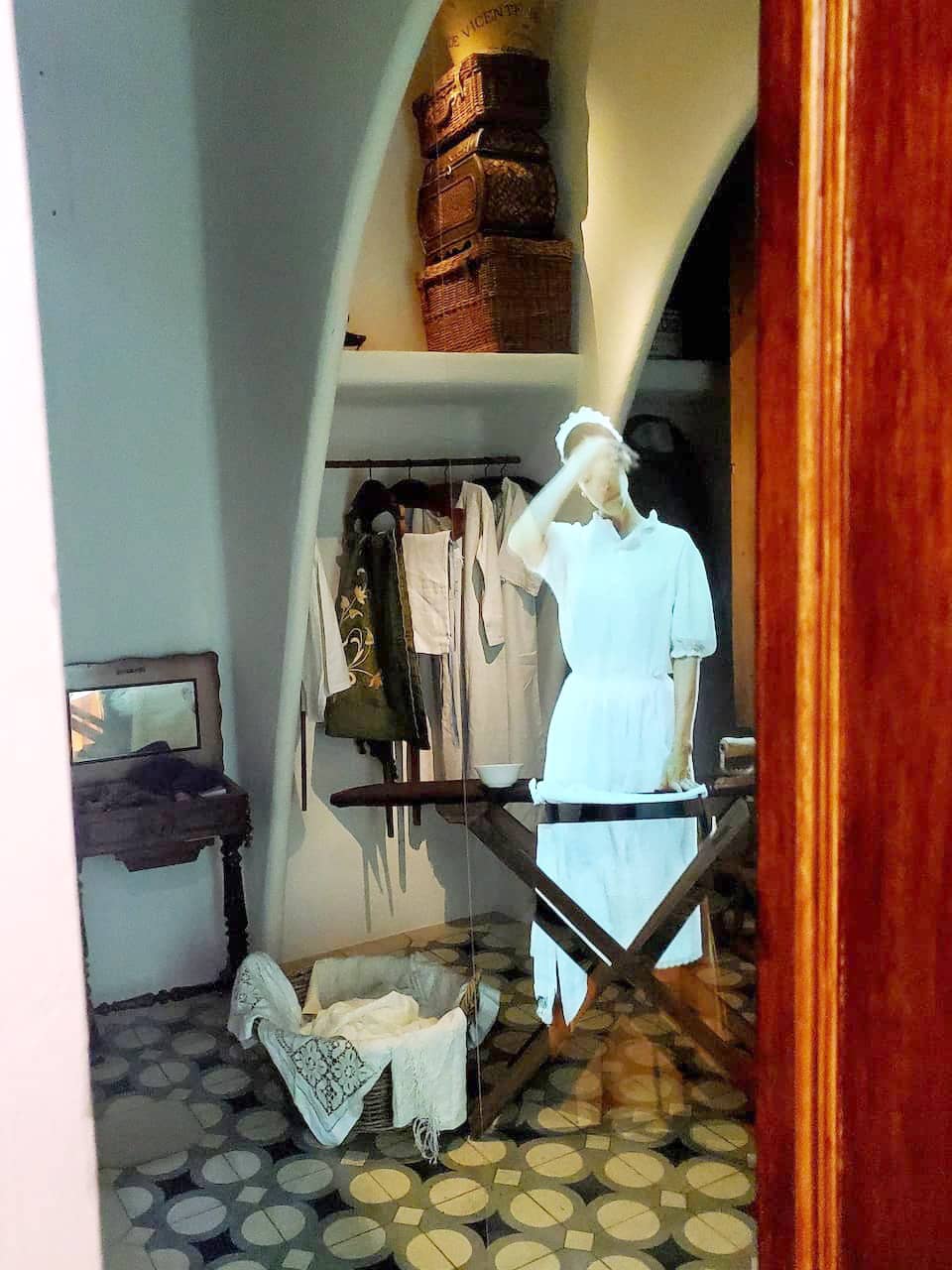
The tour could have concluded through a simple back staircase, but as we learned throughout our visit, there is nothing simple about Gaudí’s vision. Instead, the stairways were covered in what looked like chain mail, the metallic wave sculptures of internationally renowned Japanese architect, Kengo Kuma. As we witnessed the suspended sculpture glimmer and sway, we realized that modern artists are still embracing Gaudí’s Modernist aesthetic over one hundred years later.
Just when we had handed in our headphones and thought the experience was over, we were ushered into “The Gaudí Cube,” which is exactly that – a seemingly non-descript black box theater. Suddenly, the lights dimmed, and we were enveloped "In the Mind of Gaudí," a short film by Turkish projection and media artist, Refik Anadol. As the cube exploded with floor-to-ceiling projections, dramatic music and melting imagery of Gaudi’s most iconic architectural pieces, we felt as though we had stepped into a kaleidoscope, awash in the colorful musings of a misunderstood genius decades ahead of his time.
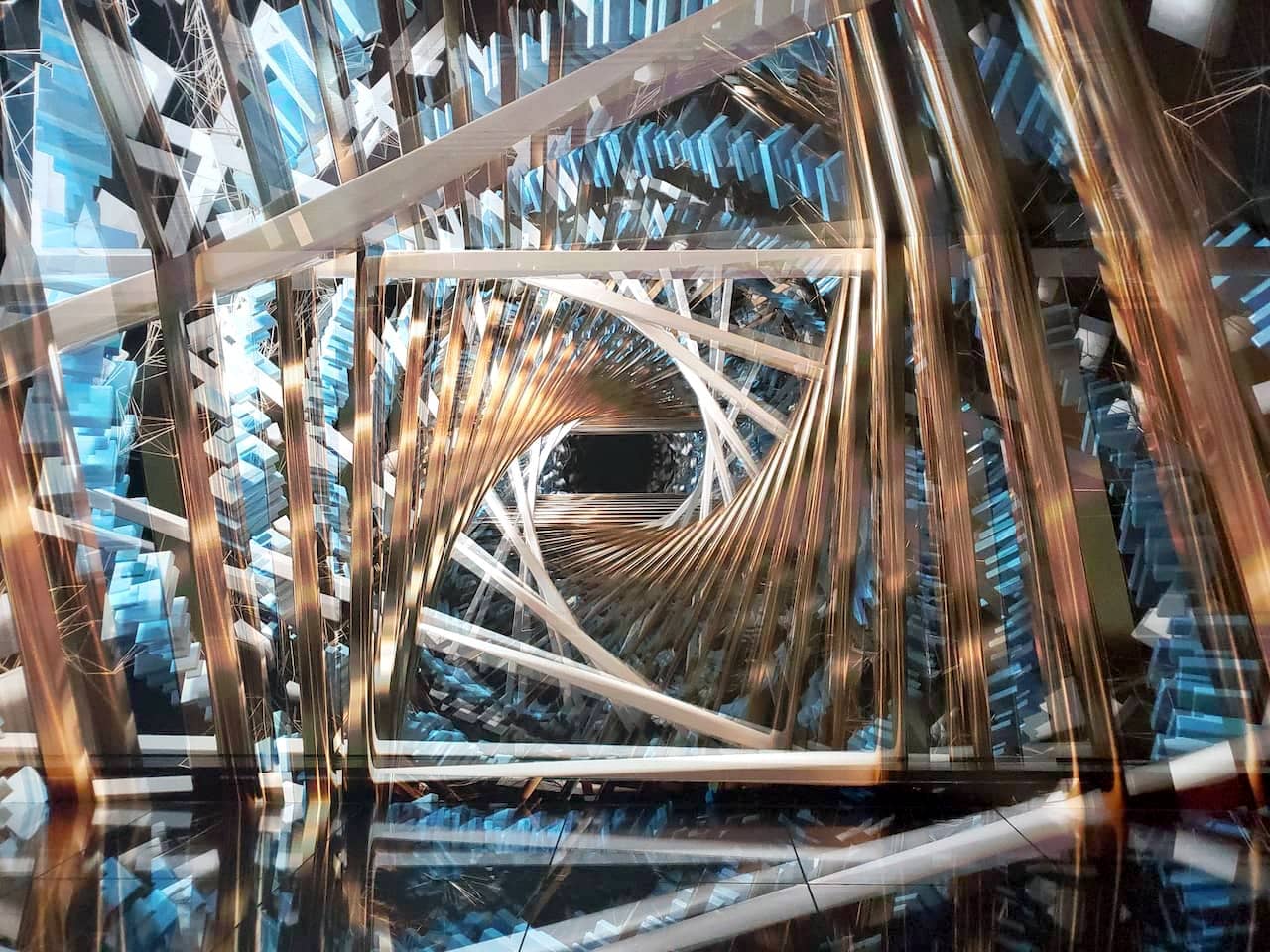
This final touchpoint brings the Casa Batlló experience – and Gaudí’s story – full circle. In the Dome, we discovered the inspirations of an artist. In the house tour, we learned how those inspirations came to brilliant life. And in the Cube, we realized that even those brilliant realizations could not calm his chaotic mind, which was constantly swirling with new inspirations for his next architectural wonder.
Since we’ve returned from Barcelona, when I ask my six-year-old daughter what she wants to be when she grows up, she replies, “architect” and begs for pottery or stained-glass classes so she can create Modernist masterpieces of her own. Thank you to the team of Casa Batlló for inspiring her, and for teaching our family that the relationship between culture and technology doesn’t need to be an “either/or.” The two can instead synergize to truly stunning effect, representing the pinnacle of what our industry can achieve conceptually, aesthetically and emotionally.
IF YOU GO
Clara Rice is the Global Director, Marketing & Communications for RWS Entertainment Group, as well as the Global Sponsorship Chair and an International Board Member of the Themed Entertainment Association (TEA).
* * *
For more theme park news, please sign up for Theme Park Insider's weekly newsletter.
Previously:
This article has been archived and is no longer accepting comments.